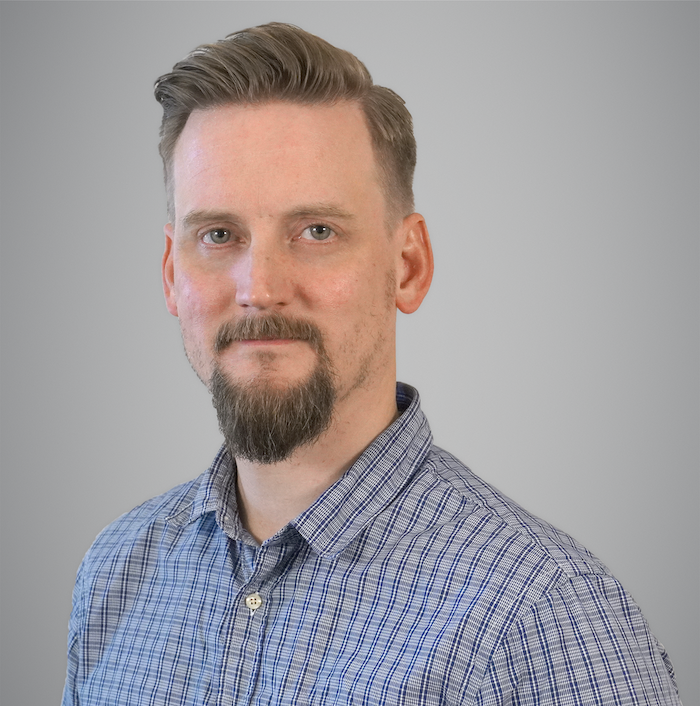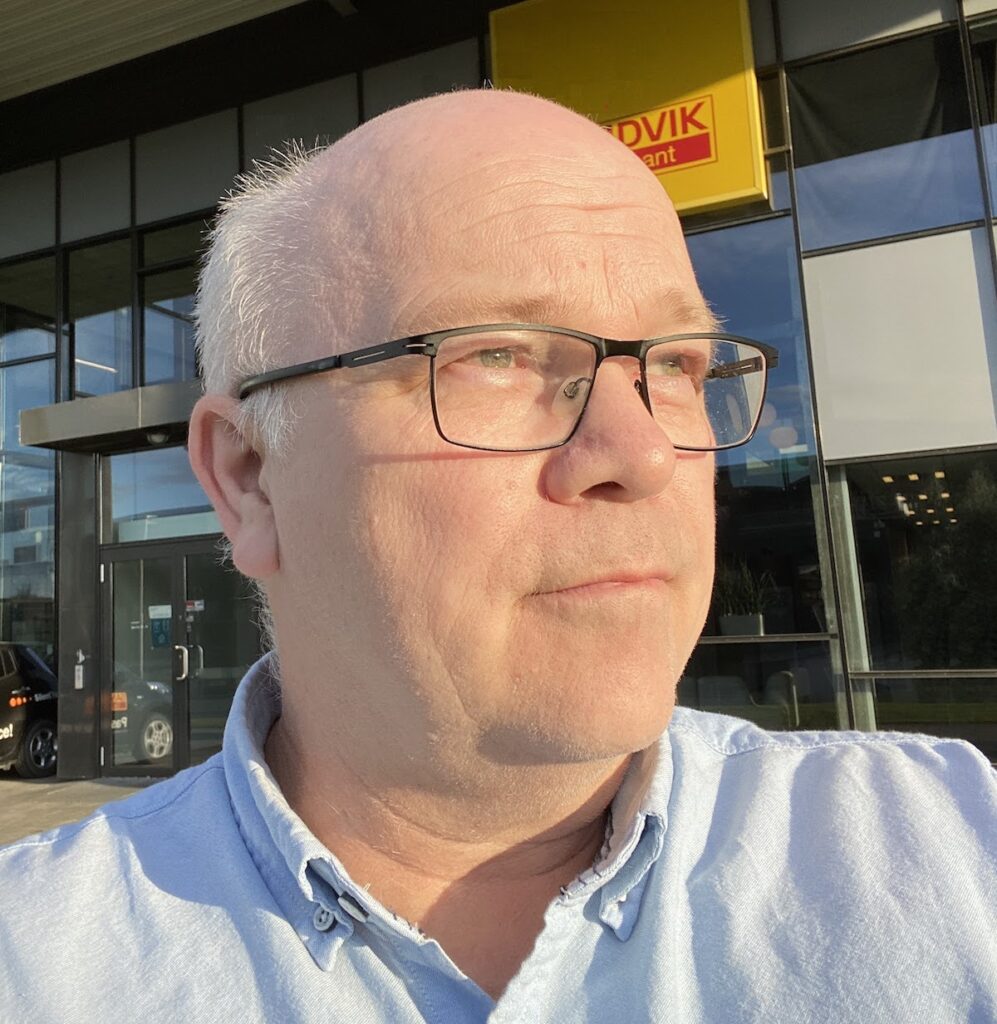ThePower of People: Adapting to Changing Times
Feb 27, 2023

CASE STUDY – A people-centric approach to work, improvement, and the adoption of automation is allowing this Norwegian company to thrive in a changing industry and environment.
Words: Eivind Reke with Håvard Buhaug
In 1861, a Swede named Göran Fredrik Göransson figured out how to industrialize steel production with the Bessemer method. Almost overnight, the price of producing steel dropped 75% and a multitude of new applications became possible. The quality of the material also improved dramatically, which allowed for more sturdy and cheaper farming equipment. In turn, the mechanization of farming pushed people in Scandinavia to move into cities, which resulted in a construction boom in the early 1900s. In Scandinavia in general and in Trondheim, Norway in particular, houses were built with wood and the old log building technique had been replaced by nails. Another effect of the 75% price drop of steel was that affordable machinery became available producing nails at high speed, leading to a production price near 0 and very cheap nails. At the same time, new sawmills popped up that made planks instead of logs for housebuilding.
This building frenzy, along with thriving boat yards, led to the establishment of many new companies in Trondheim that produced nails and rivets. At the height of the boom, as many as six different nail companies were operational in Trondheim alone. However, with the arrival of new boat-building techniques and the availability of cheaper nails imported from elsewhere, most of these companies disappeared over time. All but one.
Trondhjems Nagle og Spigerfabrikk (TNS), at the time known as Teeness, pivoted. Around the same time as the industrialization of Norway was happening, Norwegian politicians discussed where to locate the new National Agricultural College, Trondheim lost out to Ås and was left with the National Technical College instead. A stroke of luck for both the town and for Teeness, it turned out. In 1964, a young student at the Norwegian Technical College (now NTNU) came up with an innovative method for machining long steel bars. As part of his master’s thesis, Hans Kristian Holmen figured out how to overcome the problem of drilling resonance, how a tuned mass damper could counteract vibrations from the natural frequency of long boring bars, that previously had made long-reach milling and boring impossible. This innovation represents the foundation of their now famous Silent Tools brand.
In 2008, Teeness moved into a new factory building in Trondheim and was bought by Sandvik Coromant, a company they had strategically cooperated with since the 1970s. It is a thriving business, currently known as Sandvik Coromant Trondheim.
THE LEAN JOURNEY
One of the main misconceptions – and maybe the most destructive – that exist on Lean Thinking is that it is all about the process. What Toyota and other remarkable examples of lean companies (from Wiremold to Danaher) knew, however, was that if you don’t have a product that sells in the market, it doesn’t matter how excellent your operational processes are. Lean starts with creating customer value and that happens when the best-quality product is in the hands of the customer for the lowest price possible. This key principle of Lean Thinking has always been a big part of Coromant Trondheim’s success.
Having said that, during a recent visit with the local lean community in Trondheim, Håvard Buhaug, the site manager and general manager of Coromant Trondheim, told us that when the company first tried their hands at lean, they failed. The first mistake they made was to talk about lean and its tools without developing any understanding of the thinking behind it. Quite quickly, Håvard had 100 employees armed with information they had gotten from Google knocking on his door to tell him in no uncertain terms that he was wrong about what lean is. The focus shifted from why and how to improve to the tools and techniques themselves, with the obvious conclusion that “it might work in Toyota, but it will never work here”. The ensuing confusion and discussions stopped any attempts at transforming the organization.
Undeterred, Coromant Trondheim’s management team waited for the next wave of transformation that came from corporate, but this time tried a different approach. Instead of telling people to start with tools like 5S, for example, they discussed ownership of the work and how the team could take control of their own processes by deciding by themselves how and where things should be. Along the way, they developed team autonomy, the troublesome problem that the concept of 5S actually strives to address. Only when people saw the effect of their work and became curious were they directed towards the lean theory and concepts, so that they themselves could further explore how they could improve their own workplace.
EVERYONE IS A LEADER
It doesn’t matter what title you have in Coromant Trondheim, because their people-centric approach to manufacturing means that everyone is a leader. And because everyone is a leader, every employee has been through basic leadership training. This means that everyone in the company saw that leadership is really about finding problems, seeing opportunities in those problems, and choosing one to explore further. The training also gave everyone a helicopter view of the business and an understanding of how their work is connected to the bigger picture, which helped people to develop their ability to choose the right opportunities for improvement and the right problems to tackle. In Coromant Trondheim, it’s about making choices, assessing the results, and learning, so that the next time an opportunity or challenge appears, people react in the best possible way for everyone and in the interest of the business in its entirety. This capability has given everyone more sense of responsibility and more authority, which in turn gives the organization a great deal of power in improving work and delivering on their daily promise to their customers.
ADAPTING WITH TECHNOLOGY
Another example of how Lean Thinking slowly made inroads in Coromant Trondheim is the new fully automated assembly line. It was designed, developed, and installed by an in-house team consisting of one mechanical engineer and a few trainee automation mechanics. Unfortunately, we can’t go into too much detail on the inner workings of the production cell, but the results have been extraordinary. The cell was able to handle in just four hours what previously required a week’s worth of production, assembling many different products on the same flexible line with little to no changeovers. This shows us yet again the power of just-in-time thinking.
It was also impressive and striking how all their machines were set up for easy maintenance and changeover and how little oil spills there was, despite the amount of machining equipment the company had. The factory was extremely clean and with a very pleasant work atmosphere – a far cry from some of the dirty and messy machining shops this author has seen during his lean travels. In Coromant Trondheim, there is an overall understanding that the total is the sum of every individual’s contribution and a commitment to prevent rather than correct. The easiest way to get a clean and tidy factory is to avoid messy process and leaks in the first place, making sure you only have what you need readily available and maybe the most important (and perhaps forgotten) part of 5S – Team Autonomy. When the operators understand the process deeply and can also explain why they do what they do and own their own process, 5S is just a reflection of this ownership. At Coromant Trondheim, this ownership was further highlighted by the bi-weekly “captain’s round” where an HSE forum of operators walk around the factory to discuss health and safety with each station and each team to look at ways they can improve Safety, Quality and Flexibility at each step.
Just-in-time thinking was also displayed in their innovative use of Automated Intelligent Vehicles (AIV). Intelligent and not Guided (AGV), really, because they could figure out by themselves the route to take when transporting materials to different workstations as they were needed and in the amount needed. If, for some reason, something is blocking its path, the vehicle will just try another route until it successfully delivers at its destination.
DEVELOPING A SMARTER AND GREENER PRODUCT
Even though the factory was impressive, what was even more impressive was how well production and product development cooperated. R&D engineers would spend quite a bit of time discussing with operators during new product development, a very different situation from the normal “tossing it over the wall” type of cooperation. When both production and R&D is under the same roof, it is easier to include all stages in a product development project. To emphasize and encourage collaboration, Coromant Trondheim placed the designer’s PC close to the machines that will produce what is being developed (often only a few meters away), which makes it completely natural for people to meet with operators and discuss. Both the developer and the operator share a common interest in making sure the new products being developed can be produced in a rational way.
Therefore, the company removed all the barriers that can be removed, or at least minimized their impact as much as possible. If physical separation is needed, it is not a solid wall, but a glass one. A good example of this thinking is that the coffee/tea station is located on the production floor – a small, but significant contribution to creating a gravity center right in Operations. The short distance between engineers and operators makes it easy to discuss technical solutions that affect production processes or a prototype to be produced… all while enjoying a good cup of coffee.
THE ROAD TOWARDS GREENER PRODUCTION
So, what is the next step for Coromant Trondheim? In addition to a name change (did you notice?), they are now taking on the sustainability challenge of creating meaningful jobs in a green factory. For the next five years, they have set out on a path towards the ambitious goal of eliminating or substituting all hazardous materials, using 60% solar energy, reusing their damping mass and carbide reinforcement parts, and collecting and using rainwater and melted snow. They want to become a certified Green Factory. Whatever challenges Coromant Trondheim might face in the future, one thing is for certain: it will be all hands-on deck to find ways to overcome them. The kaizen spirit and respect for people is well and truly alive at the company, as it moves from challenge to challenge leveraging the power of its people.
THE AUTHORS

Eivind Reke is a lean author and Chairman of Los Norge.

Håvard Buhaug is Managing Director of Sandvik Coromant Trondheim.
Original Article: https://planet-lean.com/lean-people-development-sandvik-coromant/
Stay In Touch.
Subscribe to our newsletter and exclusive Leadership content.
We respect your privacy and won’t spam your inbox
